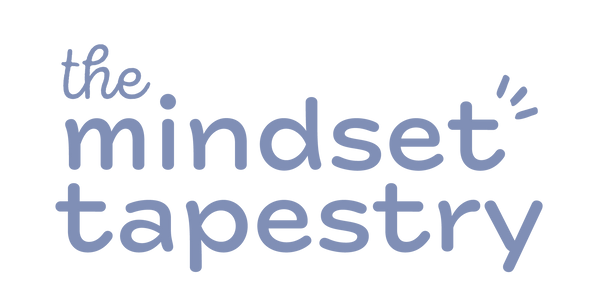Tapestry Talk with The Singing SLP, Kevin Simmons

Deanna: What inspired you to become a Speech and Language Pathologist?
Kevin: I love working with kids; they bring so much joy and laughter to life. From an early age, I knew I wanted a career centered around children, but I wasn’t sure exactly what that would look like. I earned my bachelor’s degree in exercise science and psychology, initially planning to follow in my sister's footsteps and become a physical therapist. I’ve always found the human body fascinating, but my grades weren’t where they needed to be, and I realized I would need additional schooling just to apply. So, after graduating, I took a year off—a break I highly recommend to anyone figuring out their path. During that time, I shadowed various healthcare professionals, including occupational therapists and speech therapists.
It wasn’t until I shadowed a speech-language pathologist (SLP) in Atlanta, GA, that I discovered my true calling. This particular SLP worked with children, and one day, she had a young patient who had difficulty talking to men. While I was originally just supposed to observe and take notes, the child eventually opened up to me as we bonded over a conversation about Marvel superheroes. After the session, the patient’s mother told the SLP that it was the first time her daughter had spoken to a male figure in over two years. That moment was a turning point for me—I knew I had found my purpose in speech therapy.

Deanna: How do you incorporate music into your therapy sessions, and what outcomes have you seen for the children?
Kevin: I love incorporating music into my sessions because it’s such a powerful tool. One of the best strategies I use doesn’t require any instruments or special items—just your voice. I’ve had countless successes simply by using familiar songs like "Wheels on the Bus" or "Twinkle, Twinkle Little Star." These songs set clear expectations, which help elicit language that’s already within the child.
For example, when singing "Wheels on the Bus," the melody creates anticipation for a word or phrase that will follow. I’ll sing the familiar tune and then pause, waiting for joint attention, a sound, or even a word from the child. It might look like this: “The wheels on the bus go round and round, round and round, round and _____,” and then I pause and wait. That moment of waiting is key because it invites the child to fill in the blank.
Familiar music or rhythms are especially effective because children are naturally drawn to music—they love the patterns and predictability (just like how we can all recite the lyrics to our favorite Taylor Swift song). Music creates a welcoming, engaging environment where language can flourish.
Deanna: Your Instagram is so creative! How do you measure your impact with parents seeking resources for speech and language? Additionally, how does humor factor into your work?
Kevin: Thank you for the kind words! My mission has always been to provide as many free resources as possible because the world of speech therapy is constantly evolving. With so many research articles and strategies out there, I focus on making things simple and accessible for everyone. Whether it's a mother, a grandfather, or anyone caring for a child, my goal is to offer fun, easy-to-apply strategies in a cost-effective way.
To measure my impact, I look at feedback from shared videos, comments, and private messages from families. It’s incredibly rewarding to hear how a video has changed the way they use language with their child or how their child keeps replaying a favorite dance video because it’s both fun and informative. We’re all learning from each other, and I’m constantly learning too, which makes this journey so fulfilling.
Humor is a big part of who I am—not just as a speech therapist, but as a friend, brother, son, and nephew. I believe humor can transform so many situations. For example, when a child is having a tough day, instead of jumping straight into speech goals, I might do a silly dance or watch a funny video with them. Almost instantly, the child becomes more engaged, and we start building a connection—which is essential to any successful speech therapy session. The biggest takeaway from today’s conversation is this: kids are just kids. They laugh, cry, and feel the sting of a stubbed toe. They’re eager to learn, make mistakes, and enjoy life. So let’s approach them with that same mentality—meeting them where they are, ready to embrace their journey.
Deanna: The Mindset Tapestry focuses on the mental wellness of children and how their self-image can influence future success and happiness. Do you believe that children who struggle with speech can face related social and emotional challenges? How do you address these emotional needs in your practice?
Kevin: I strongly believe that children can experience social and emotional challenges. In fact, many of the kids I work with spend time discussing their emotions and how these feelings impact their daily lives. As their speech-language pathologist, I make it a priority to acknowledge and validate those emotions. By stepping into their world and building a connection, I try to see things from their perspective. What might seem like a small problem to us as adults can feel enormous to a child. That’s why it's so important to meet them where they are, understand their point of view, and offer support accordingly.
Deanna: What can parents do to promote healthy communication and language development from early childhood? What top tips would you offer to parents of children facing speech difficulties?
Kevin: The most effective way to promote healthy communication and language development from early childhood is by creating language-rich environments. These environments are filled with experiences that nurture a child's growth, such as reading books, using cause-and-effect toys (toys that elicit a response or expectation), and more. But beyond the materials, it’s also about how we engage with our kids. During play, are we giving them enough time to respond? Are we asking open-ended questions instead of just yes/no ones? Do we provide commentary and acknowledge any form of communication, whether it’s an eye raise or a hand gesture? All of these actions support language development.
If your child is experiencing speech difficulties, one of the most valuable questions to ask is, "Who is your child engaging with?" Peers are some of the best language models. When children observe their same-aged peers interacting, taking turns, socializing, and exploring the world, it can have a profound impact. I've seen children not only improve their language skills but also make gains in speech sounds and feeding therapy simply by witnessing other kids navigate life.
